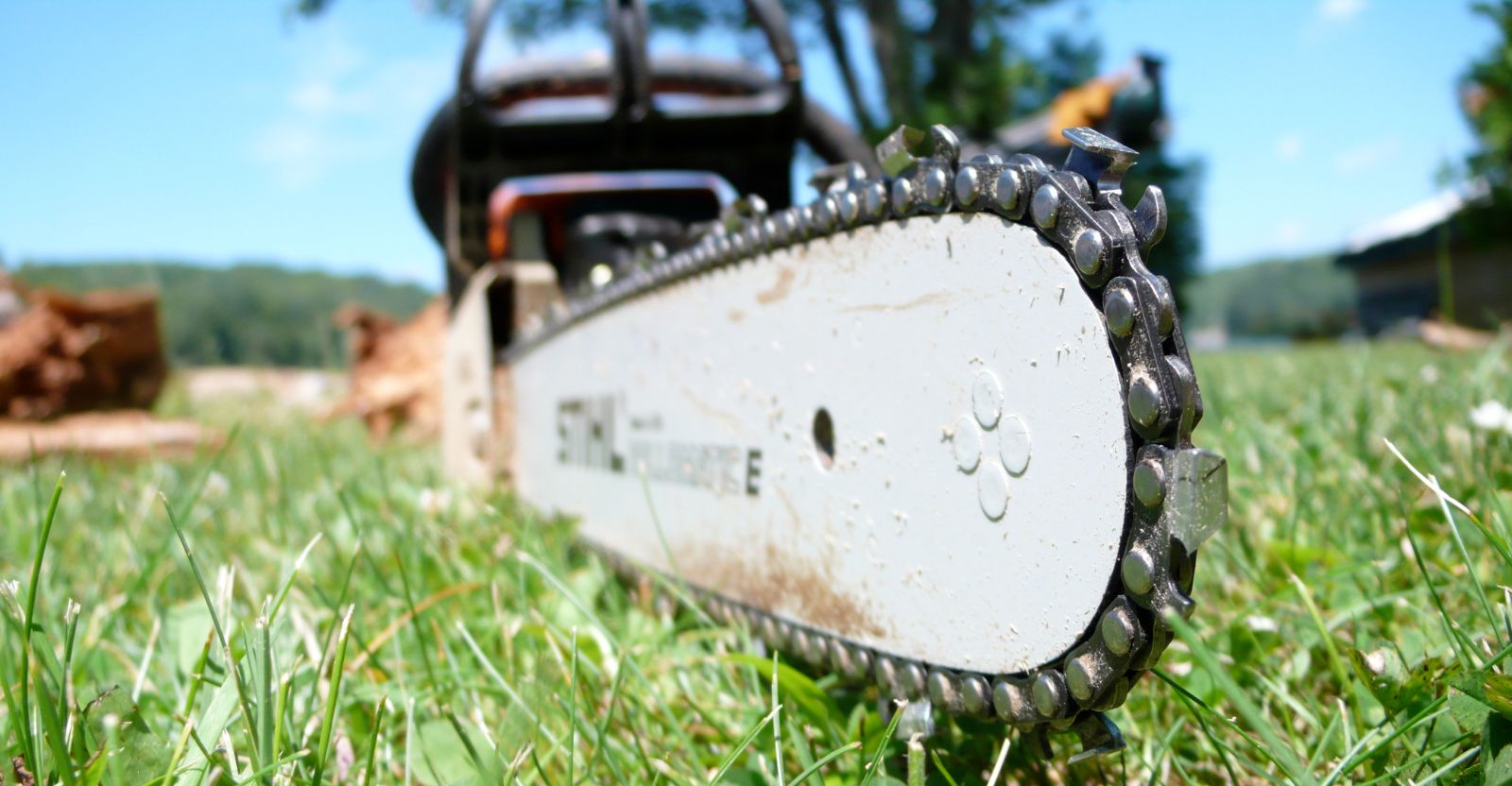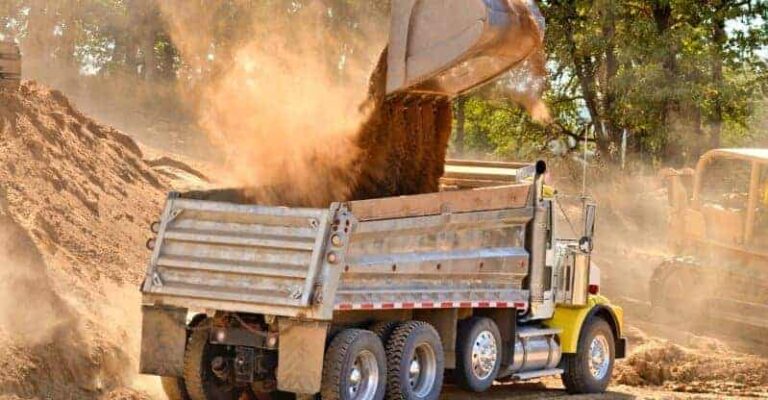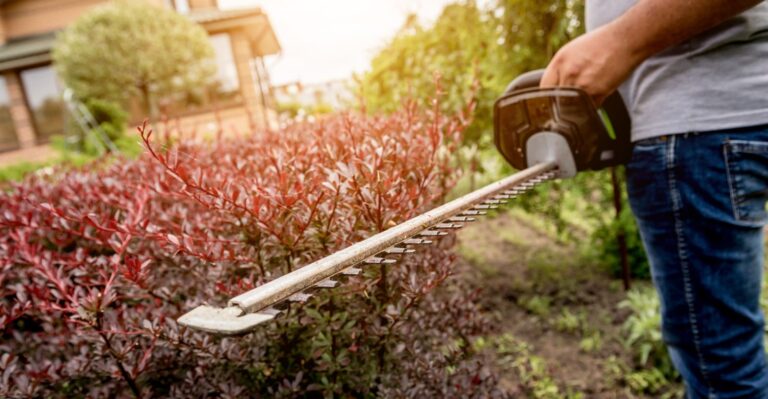Amazon has put together some great Home Gift Deals – save money and get your shopping done at the comfort of your home! Click here to see deals on Amazon
A chainsaw is an indispensable tool when it comes to felling large trees or chopping woods in your garden. But after repeated use, the chainsaw bar needs to be replaced either due to damage or worn out.
If that happens, you need to find the measurement of the bar for ordering a replacement part. Most often, that’s not a problem as the bar has dimension printed on it.
But sometimes, due to excessive wear and tear or for some other reasons, you have to measure the chainsaw bar length manually.
Let’s find out how to measure a chainsaw bar length without needing any special tools. You will only need a tape measure to size it accurately.
How to Measure Chainsaw Bar Length
Before you get started with measuring the chainsaw bar, you need to understand some fundamentals of the chainsaw chain first. These are gauge, pitch, and drive links.
Gauge
The gauge is the thickness of the drive links. It’s the width of the groove in the chainsaw bar. This is the cut where the chain moves around. You must have the correct gauge bar to ensure that the chainsaw chain will fit in it.
Most chainsaw chains have a gauge around 0.043″, 0.050″, 0.058″, and 0.063″. You can measure the gauge yourself, but you can always look at the old chainsaw bar, and it should be printed there.
If you can’t find the gauge on the bar, then for the most accurate measurement of the indicator, you may need to use calipers. If you don’t have a caliper, you can use the coin trick to measure it. For this, you need a quarter, penny, and dime.
Take these coins one by one and insert them in the chainsaw bar gauge. Depending on which coin you can fit without forcing, you can know the gauge.
Quarter – 0.063″ gauge
Penny – 0.058″ gauge
Dime – 0.050″ gauge
Make sure you clean the dirt and debris from the groove before you start the measurement to get an accurate size.
Pitch
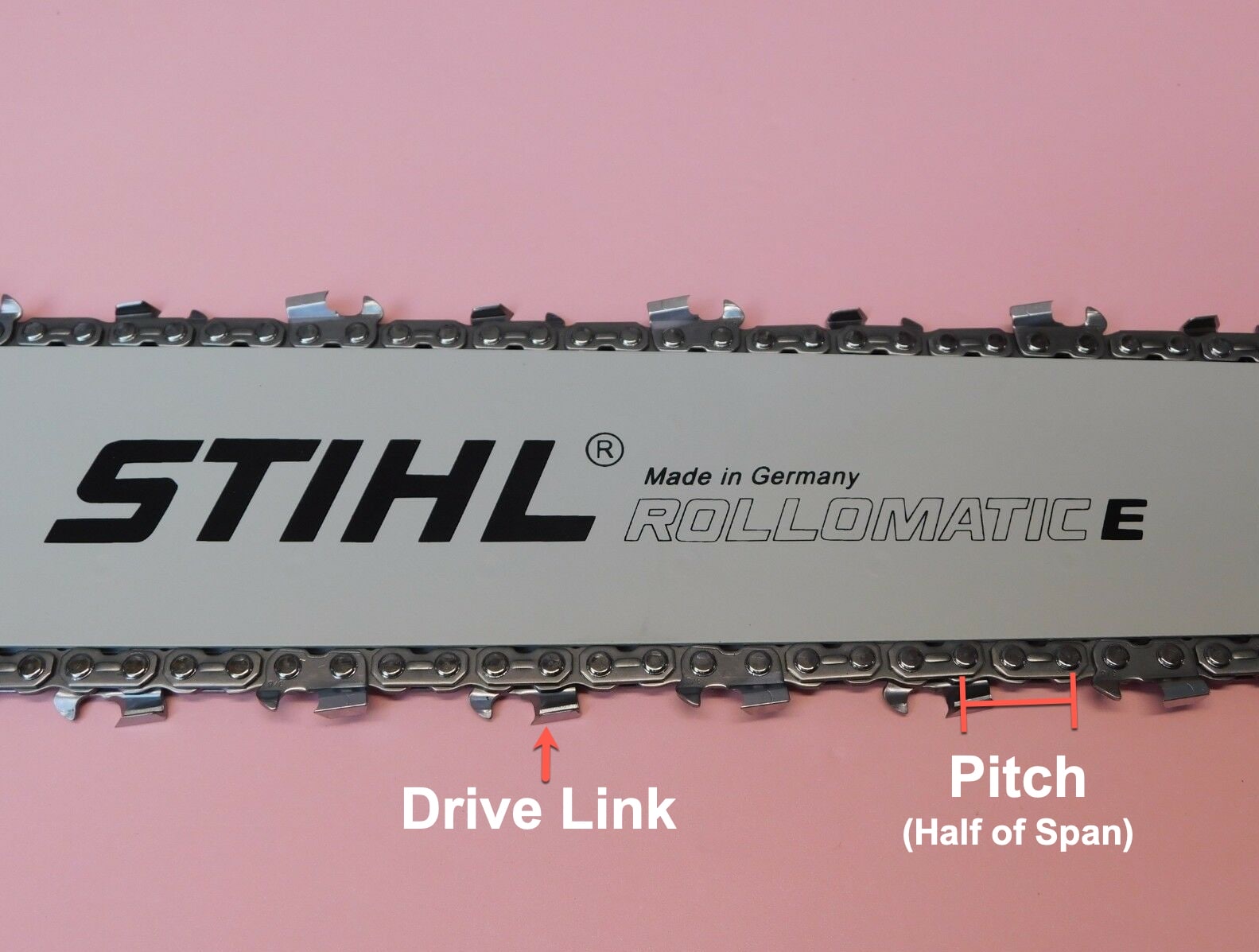
The pitch of the chainsaw chain refers to the drive link’s distance. It’s measured at half the distance between three rivets in the chain. You can find the pitch at the old chainsaw bar or look at the user manual.
The most common chainsaw pitch is 3/8 inch, ¼ inch, 0.325 inches, and 0.404 inches.
Drive Link
The drive links determine the overall length of the chain. You always want to buy the bar based on the full cutting length of the chainsaw chain.
If you have the old chainsaw chain available, then you can count the drive link yourself by placing a chain on the ground and counting the top or bottom number of drive links, then doubling it.
Read More: 10 Best Chainsaw Chain For Cutting Hardwoods in 2021
What’s Difference Between Full Bar Vs Cutting Bar?
When you’re ready to measure the bar, you need to know the full bar length and cutting bar length.
Full Bar Length
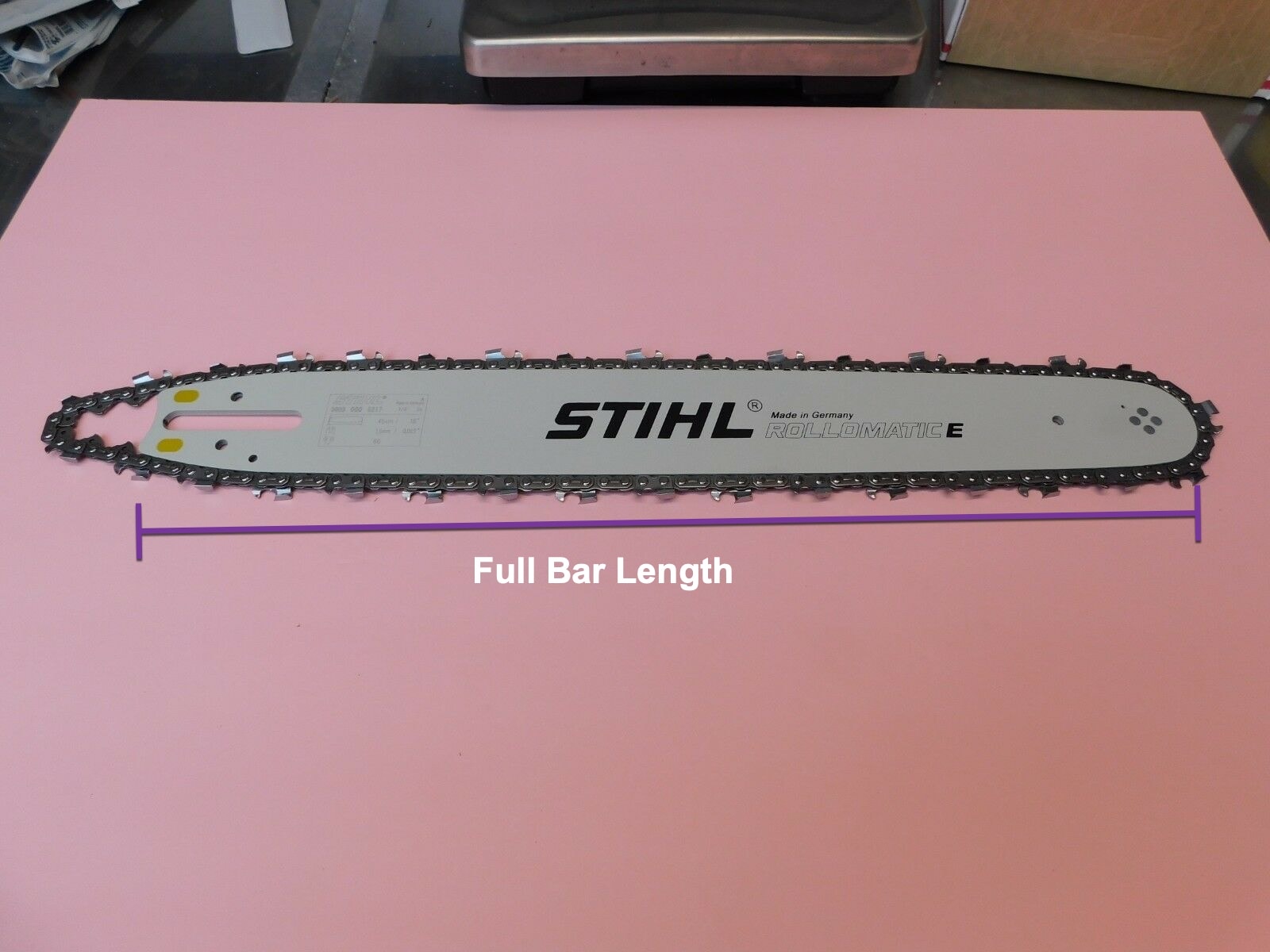
The full bar length or actual length of the bar is the complete length of the bar when it’s not assembled in the chainsaw. If you’re planning to replace the older bar, then you have to remove it from the chainsaw by unscrewing it from the socket driver.
After you altogether remove the bar and chain from the chainsaw, place it on the ground, and use a measuring tape to measure it from the front to the end. It will be the actual cutting length of the bar.
Cutting Bar Length
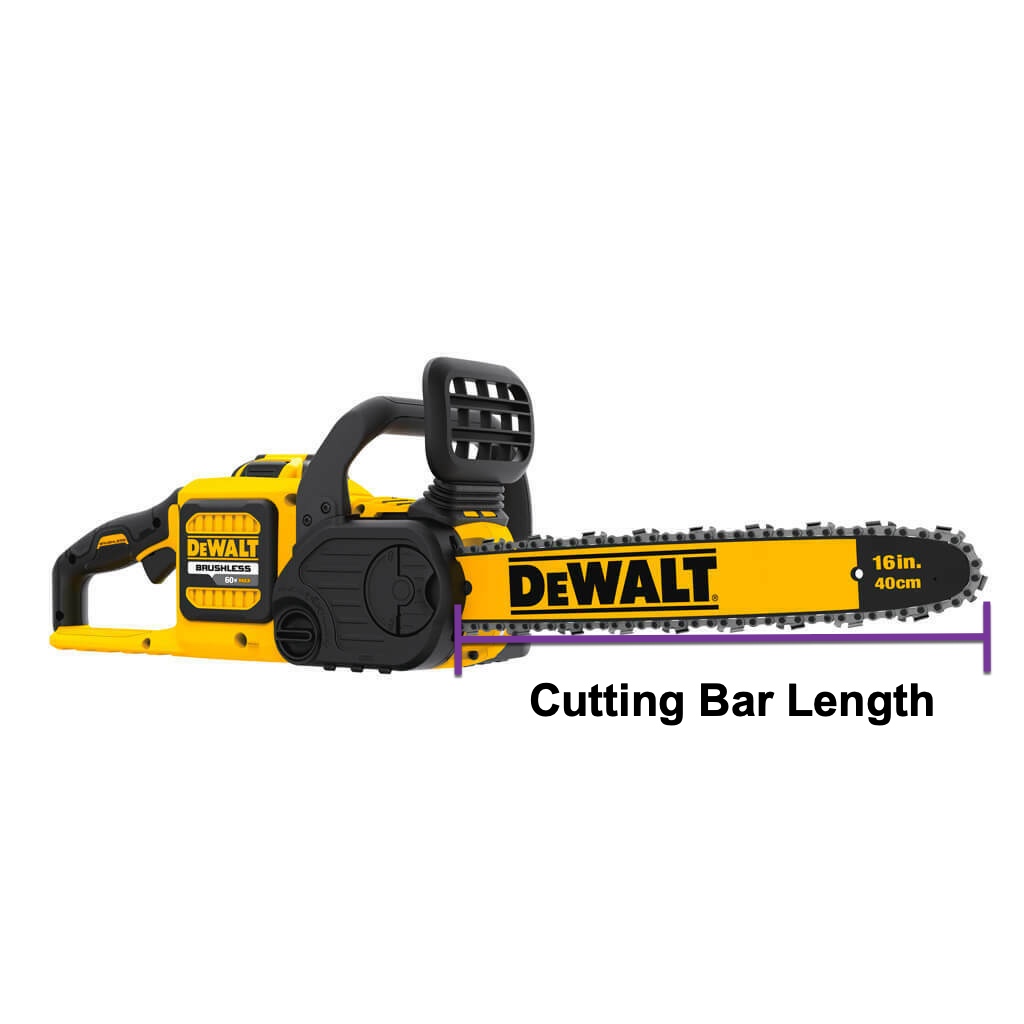
The cutting bar length is the distance from the tip to the body of the chainsaw. The cutting bar size is shorter than the full bar length as some part of the bar is hidden under the cover of the chainsaw.
The cutting bar size gives you the maximum thickness of the log you can cut. You can use the standard measuring tape to get the bar size then round to the nearest even number. Most chainsaws have bar lengths from 16 to 20 inches.
Caution: Safety is essential when you’re dealing with the chainsaw. Always turn off the chainsaw before touching the bar or chain. If you’re using a gas-powered chainsaw, you can remove the spark plug that prevents the chainsaw from starting.
If you’re using a corded chainsaw, then unplug it from the wall outlet and press the trigger to make sure the chain doesn’t move. For a cordless chainsaw, remove the batteries and make sure there is no power to the chainsaw when you press the start trigger.
When Does a Chainsaw Bar Need to be Replaced?
You should always replace the chainsaw bar for safety and cutting efficiency. Although this isn’t something you have to do frequently since the chainsaw bar lasts long.
But the repeated chain movements and the friction wore out the bar eventually. If the bar isn’t damaged, you can attempt to repair it to reuse the bar. But if the bar is damaged or cracked, then you have to replace it due to safety.
The most common damage happens to the bar and chain if you run the chainsaw without proper lubrication. It generates much friction that creates a burn and wear and tear to the metal bar.
A loose chain may also cause damage to the bar as it creates a concave type bend inside the bar. It happens due to a loose chain continuously hitting the bar near the power wheel. It’s essential to keep the proper tension in the chain.
You should also check the gauge of the bar. If it widens enough, then you have to replace the bar. A loose gauge bar could result in a chain wobble while cutting. You may not get a cleaner cut or chain that comes off from the guide bar.
The last thing you need to check is the sprocket (the wheel at the tip where the chain bends). The gear won’t move freely either due to damage caused to the sprocket by getting pinched when cutting a tree or overheating the bar. Sometimes, the sprocket may be missing some gear teeth.
When that happens, check if the sprocket is fixable, if not, then you have to replace the bar.
Which Chainsaw Bar is Right for You?
If you’re replacing the bar and chain that came with the chainsaw, then you should try to get the same size bar as it originally came with the chainsaw.
Chainsaws are designed with cutting chain and bar specifications in mind. Using an incompatible chain or bar could result in injury or damage to the chainsaw.
But if you’re looking to buy a new chainsaw and deciding how long a saw bar should you get, then it depends on the thickness of the log or tree you will be cutting.
We recommend you to choose an inch or two longer bar size than the thickest log you will come across.
For example, if you have to tree that has a diameter of 14 inches, then use a bar that is at least 16 inches long. A longer bar gives you more clearance when cutting.
You can still cut a tree or log that is thicker than the bar size. Nevertheless, you have to make two passes by cutting from opposite sides. It’s a time-consuming process and sometimes a little bit awkward if there is a wall or other obstructions on the other side of the tree.
But also, don’t go overboard and buy the most extended bar chainsaw. The longer bar chainsaw gets bulky and heavy. It makes it difficult to maneuver when making cuts.
If in your yard, you have small trees, then there is no reason to buy the chainsaw with 20-inch bar size.
Its professionals and heavy users use the longer bar. Moreover, the long bar chainsaw is more powerful and expensive.
You may not be getting the most value out of it by buying the expensive heavy-duty chainsaw that you’re not going to use to its fullest.
When you’re choosing the cutting length, use the following reference to select the bar size.
- 8 – 16 inches bar: For small to medium-size tree pruning and limb removal.
- 16 – 18 inches bar: Small to medium-size tree pruning, limb removal, and felling tree.
- 18 – 20 inches bar: Medium to large size tree pruning, limb removal, feeling tree, and cutting firewood.
- 20 – 24 inches bar: Medium to large size felling trees and cutting firewood.
Read More: 10 Best Chainsaw Chains For All Types of Chainsaw
What are the Chainsaw Bar Types?
Chainsaw bar comes in different shapes and sizes. The following are the most common types of chainsaw bars.
Sprocket Nose Bar
This is the most common type of bar as it has a sprocket at the tip of the bar. It helps reduce the friction when the chain makes a circular motion. The sprocket also helps lessen the kickback that happens when the chain suddenly stops while cutting.
Sturdy Nose Bar
This chainsaw bar has no sprocket that makes it suitable to cut in sandy and dirty logs. However, the sturdiness of the bar comes at a price as these are more expensive than the sprocket nose bar and run hot.
Carving Nose Bar
The carving nose bar is suitable for wood artists or carpenters who need more control while cutting. These are used in small to medium size chainsaws and have a pointed nose bar.
Laminated Bars
The laminated bars have several different materials coatings on them that improve the sturdiness and life. It’s suitable for chainsaw chains that are under 20 inches long.
Solid Bars With Changeable Tips
For professionals or heavy users who need frequent cuttings of hard or more robust surfaces can choose solid bars with changeable tips.
Most often, the tip is where the chainsaw gets the most wear and tear. An ability to just replace the tip improves the life of the bar. It’s cost-effective as you can replace the tip alone without changing the full bar.
What is the Best Chainsaw Bar Length?
The best chainsaw bar cutting length is the one that meets the specification of the chainsaw. The most heavy-duty professional-grade chainsaw comes in a range of 20 inches or more. The longer chainsaw bar allows you to cut a more massive and sturdier tree with ease.
If your primary purpose is to cut small to medium-size trees, then choose a bar size that is 12 to 16 inches long. Most residential and beginners use the medium size chainsaw model as these are lightweight and easy to maneuver.
What is the Ideal Chainsaw Bar Length to Engine Size?
The chainsaw bar length and the engine power determine what tree you can cut. A more extended saw bar needs a higher power engine to drive the chain.
The chainsaw is primarily three types, gas, electric and cordless. The most electrical and cordless chainsaw is light to medium duty. The bar on these chainsaws is around 10 to 18 inches long.
The gas-powered chainsaw provides more power than the electric and cordless chainsaw and can have longer blades from 18 to 24 inches.
Here is a summary of the chainsaw bar length to the engine size.
| Engine Type | Power | Chainsaw Bar Length |
|---|---|---|
| Battery | 18 to 20 V | 10 – 12 inch |
| Battery | 40V | 12 – 16 inch |
| Battery | 60 V | up to 16 inch |
| Electric | 12 Amp | 10 – 16 inch |
| Electric | 15 Amp | 16 – 18 inch |
| Gas | 35 cc | 10-16 inch |
| Gas | 45 cc | 12 – 18 inch |
| Gas | 60 cc | 20 inch or more |
Are Chainsaw Bars Interchangeable?
It depends on the make and model of the chainsaw itself. Unfortunately, the chainsaw bars aren’t standardized. Most manufacturers come up with designs that may make it incompatible to interchange different brands of chainsaws.
Secondly, the manufacturers also have the incentive not to make their bar compatible with other models as their main profit comes from the chainsaw itself that can cost hundreds of dollars.
However, if you get the same specification bar that may fit in your chainsaw, then you can interchange it with a different brand. For example, you can order a generic brand chainsaw bar that you may be able to fit in the branded chainsaw models, such as Husqvarna or Stihl.
Pay close attention to the tension hole and the oil holes placement. An unfit bar may cause severe injury or damage. You have to be very cautious about the compatibility.
Most chainsaw models will tell you what types of bar models it can fit. As long as you follow the manufacturer-recommended specifications, you can interchange the bars.
How Big a Tree Can a 20-inch Chainsaw Cut
A 20-inch chainsaw means the bar has to be around 18 inches to give some clearance to the chain. The 16 to 18 inches bar is the average size of the bar, and a 20-inch chainsaw can cut up to 18 inches thick tree in a single stroke without changing the direction.
However, if you’re making a double side cut in the opposite direction, then it can cut up to 36 inches thick trees. If you’re cutting large trees such as oak, beech, and spruce that can become thick, then you can use a chainsaw that is 20 inches or larger.
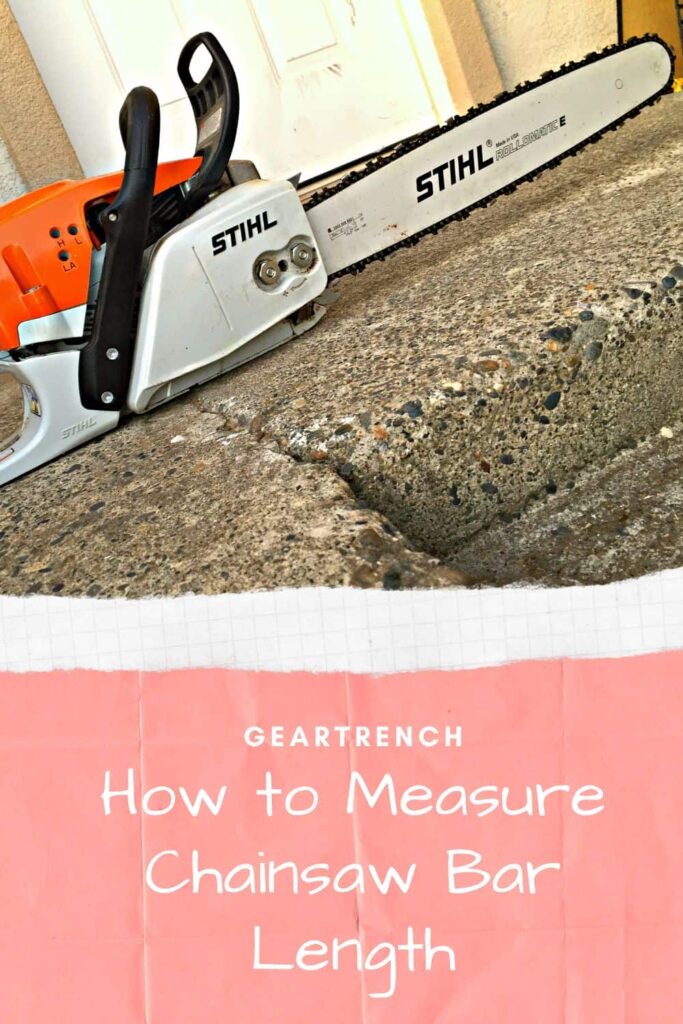
Don’t forget to share this post

